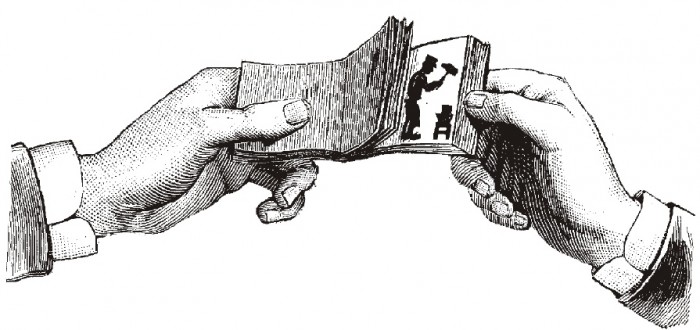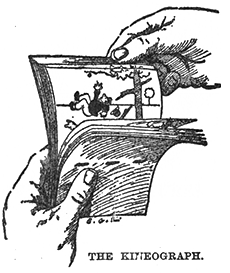What is Flipbook Like?
Flipbook — is a small book with pictures, where flipping pages creates the illusion of animation.

Flipbooks history
First patented in the United States on May 16, 1882 by Henry Van Gauvenberg of New Jersey, flipbooks consisted of simple patterns of successive phases of movement connected by a single paper clip. When turning the pages, an optical illusion of movement was created. These were the earliest forms of what is called interactive multimedia today, and in an era when screen technologies had not yet arisen, they were at the forefront of animation and cinema.
Cracker Jack Company began distributing flipbooks in the early 1900s as an appendix to cookie packaging. Soon, other manufacturers followed suit: flipbooks accompanied cooked breakfasts, chewing gum, cigarettes, they were used to advertise cars. The trend continued until the end of the 40s.
First patented in the United States on May 16, 1882 by Henry Van Gauvenberg of New Jersey, flipbooks consisted of simple patterns of successive phases of movement connected by a single paper clip. When turning the pages, an optical illusion of movement was created. These were the earliest forms of what is called interactive multimedia today, and in an era when screen technologies had not yet arisen, they were at the forefront of animation and cinema.
Cracker Jack Company began distributing flipbooks in the early 1900s as an appendix to cookie packaging. Soon, other manufacturers followed suit: flipbooks accompanied cooked breakfasts, chewing gum, cigarettes, they were used to advertise cars. The trend continued until the end of the 40s.
Then, in the 60s, inventive marketers Disney, Gillette, McDonald's, Post Cereals, Canada Dry, Ford resumed this trend, using flipbooks as interactive stories and promotional gifts to promote their products. The fashion for flipbooks temporarily abated in the 70s, when new interactive multimedia began to gain strength.
Now the cartoon books are back, along with photographic film and polaroid cartridges, confirming the human love for real objects, for the reproduction of which nothing special is needed.
